Distributed Force Sensing Upper Arm Cuff for Harmony Exoskeleton
This project developed a modular sensing system for measuring distributed interface forces in wearable devices using force-sensing resistors. The system enables real-time monitoring of pressure distribution across human-robot attachment interfaces to optimize ergonomics and safety.
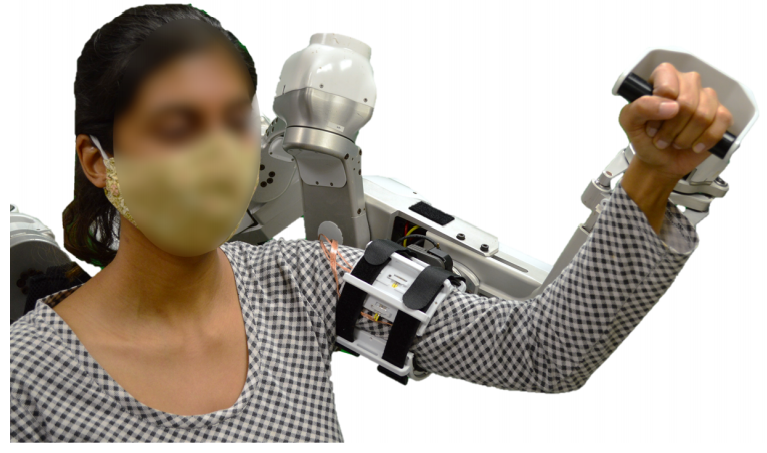
The design introduced in this work is implemented for an upper-arm interface in the Harmony exoskeleton.
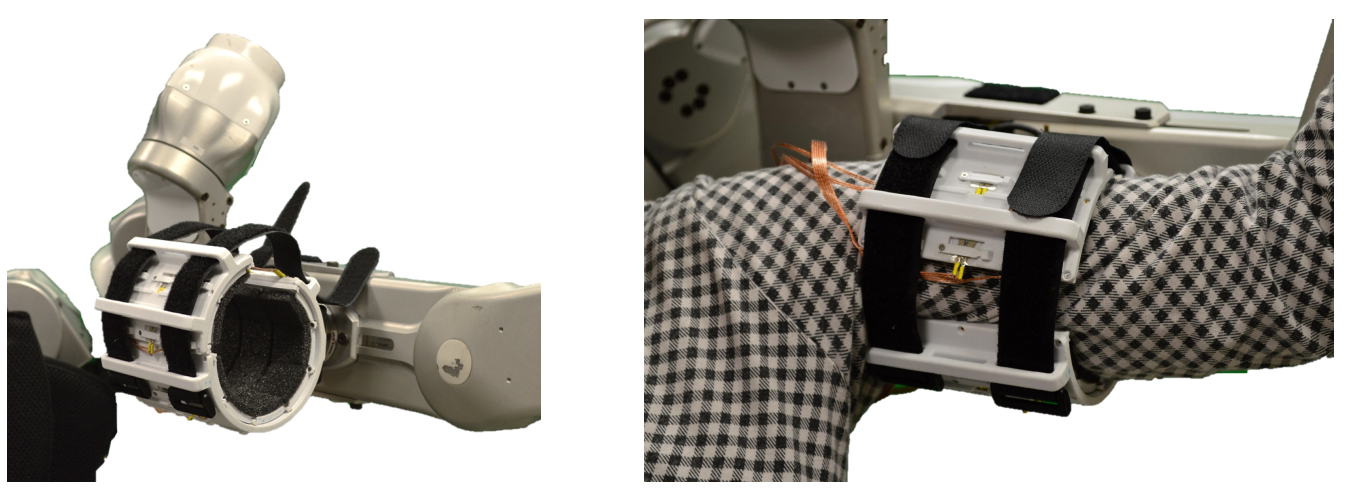
The sensorized upper-arm cuff is used with the upper-body Harmony exoskeleton and a human user to explore potential applications of this work.

The upper-arm cuff uses 24 panels, each covered with foam padding, to allow for comfortable interaction between the wearer and the interface.
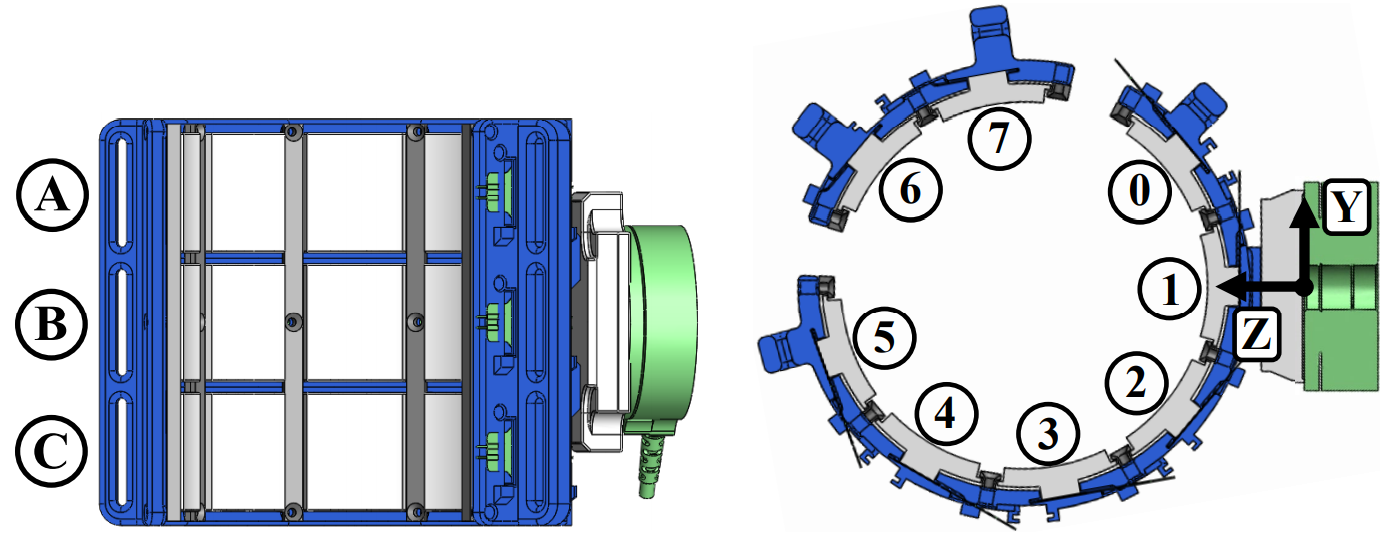
Sensor placement on the cuff is distributed across three rows and eight columns. Foam padding is not shown in these images. The orientation of the six-axis load cell can be seen.
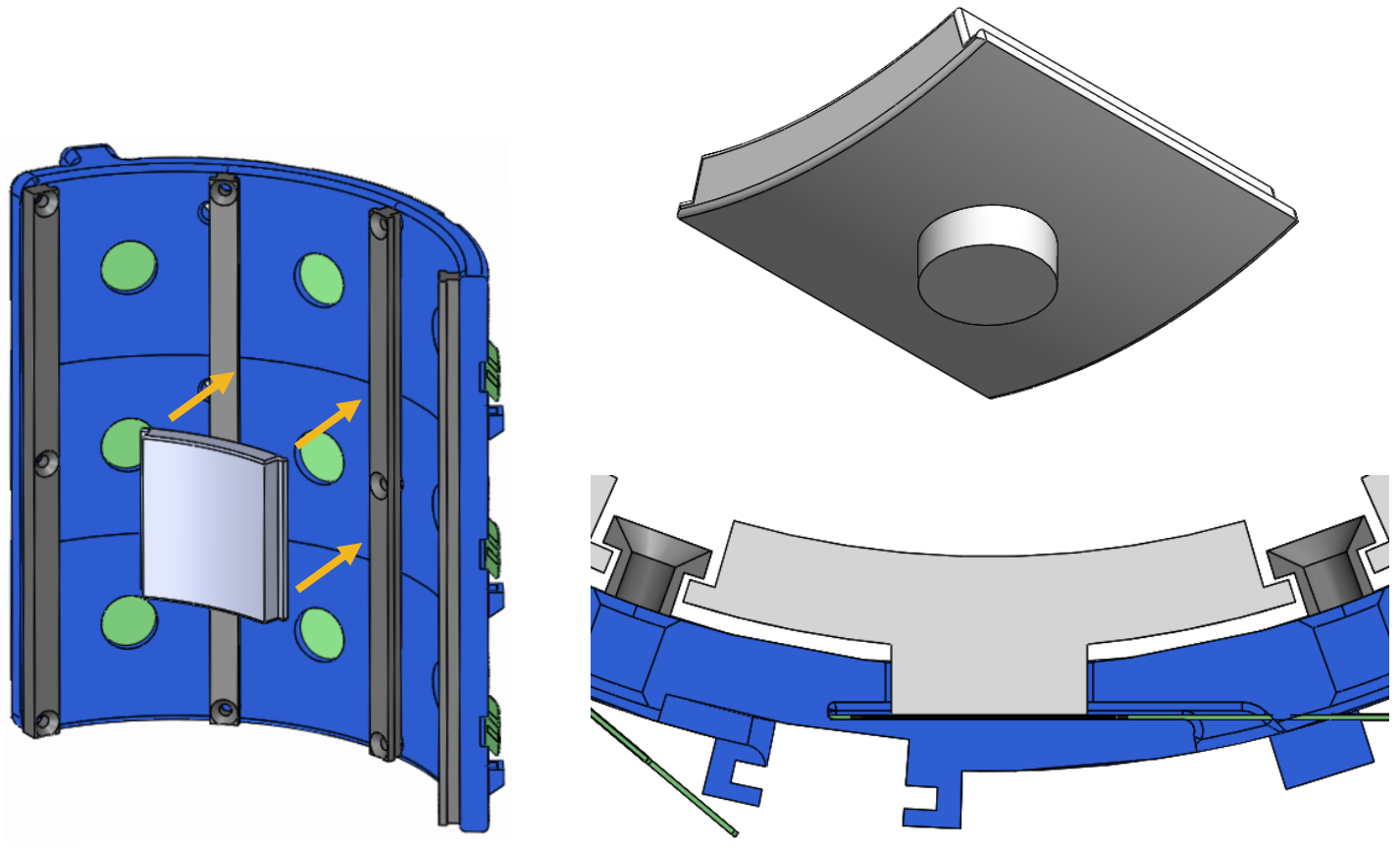
Integration of a single panel (white) installed in the sensorized cuff (blue) shows how it interfaces with the FSR (green) through a puck design. The divider rails (gray) keep the panels from falling out.
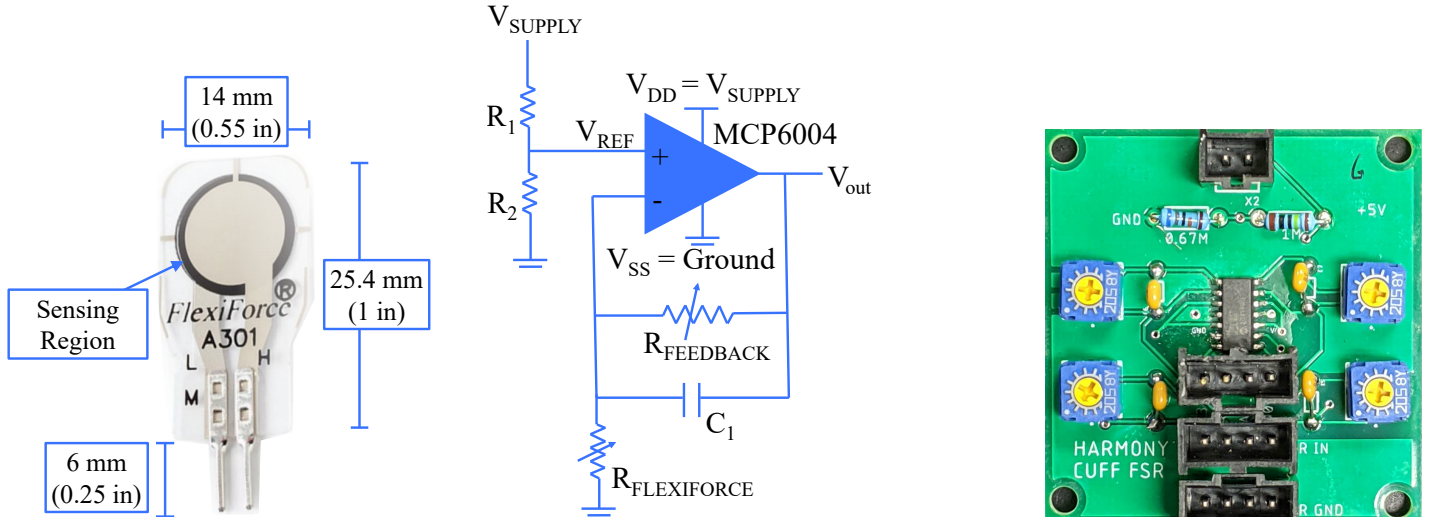
The force-sensing resistors (FSRs) are made from piezoresistive material that correlates the force applied on the sensing surface to the resistance of the sensor in an electrical circuit. This circuit requires the use of an operational amplifier. A printed circuit board (PCB) has been designed for the implementation of the circuit, such that each PCB accommodates four FSRs.
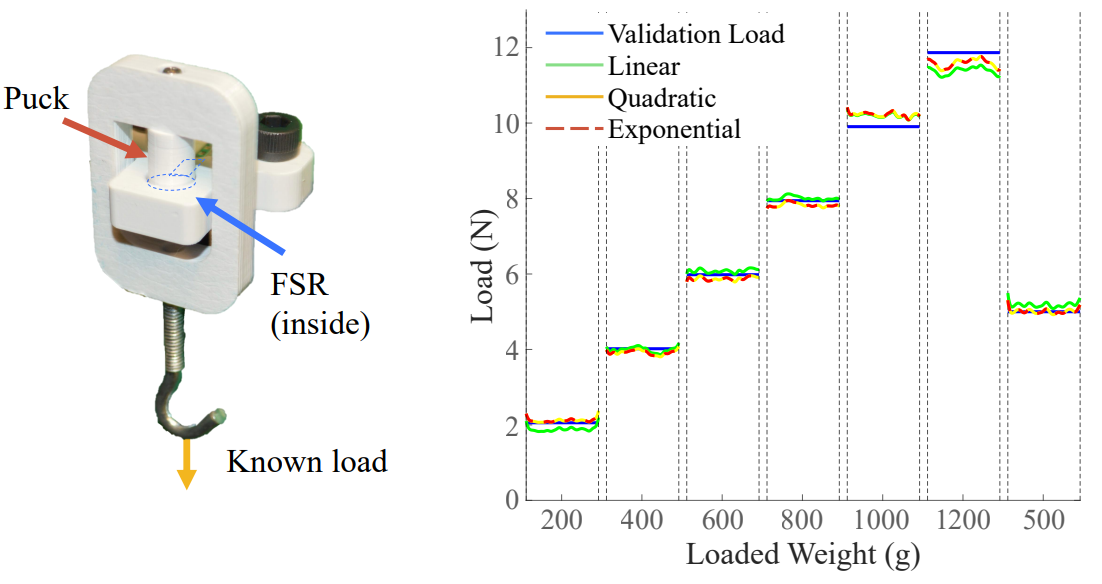
Calibration setup and results from a representative FSR (1s of data under each loading condition). The linear relationship has the best performance across calibration tests across 24 sensors.

The validation testbed with the sensorized cuff mounted on a six-axis force/torque sensor (green). Distributed forces are applied with the loading block (black).

Four different loading cases are used to validate force transmission from panel surfaces to FSRs in the sensorized cuff. Only the panels highlighted for a given case are loaded in that test.
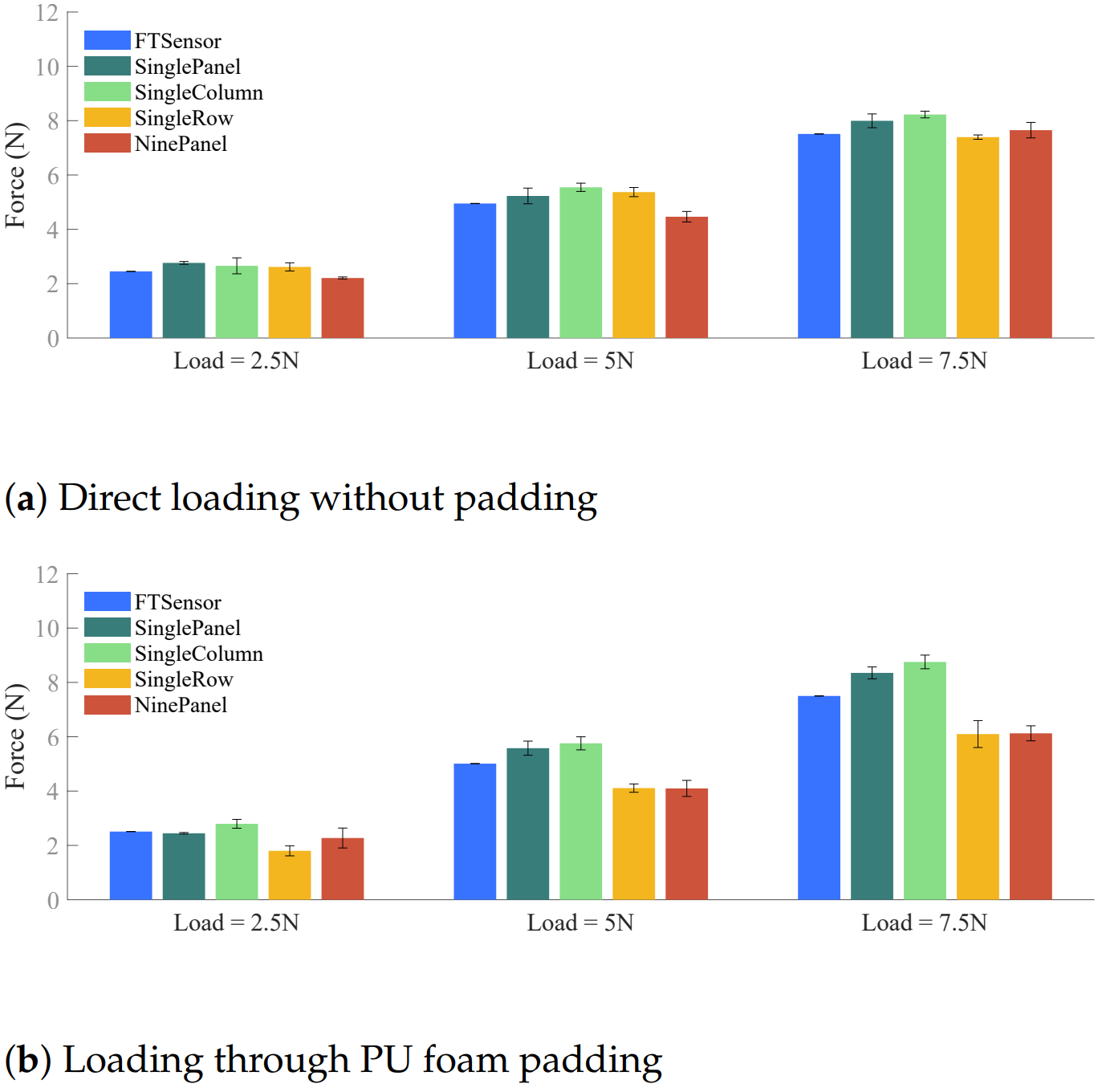
Results comparing the vertical loads measured by the force/torque sensor against the total sum of loads measured by the FSRs (in the vertical direction) for four loading cases: Single Panel, Single Column, Single Row, and Nine Panel, at three load levels. The error bars represent standard error across three repetitions. The error bars represent standard error.
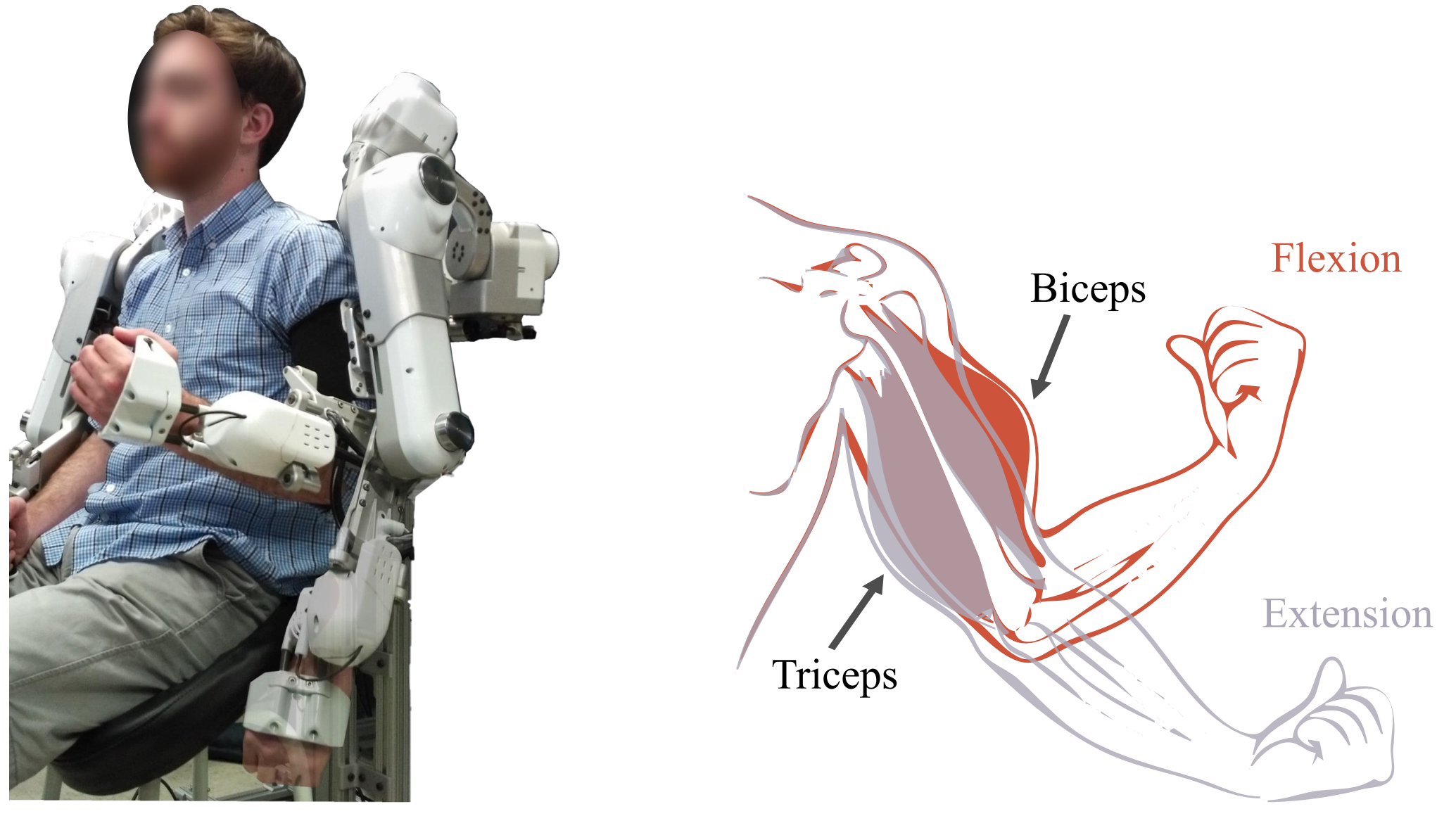
(Left) Movement performed by the subject starts at full elbow extension (transparent), going to full flexion of the elbow (opaque) and back to full extension at the end of a single repetition. (Right) Expected deformation of the arm’s muscles in response to the performed movements.
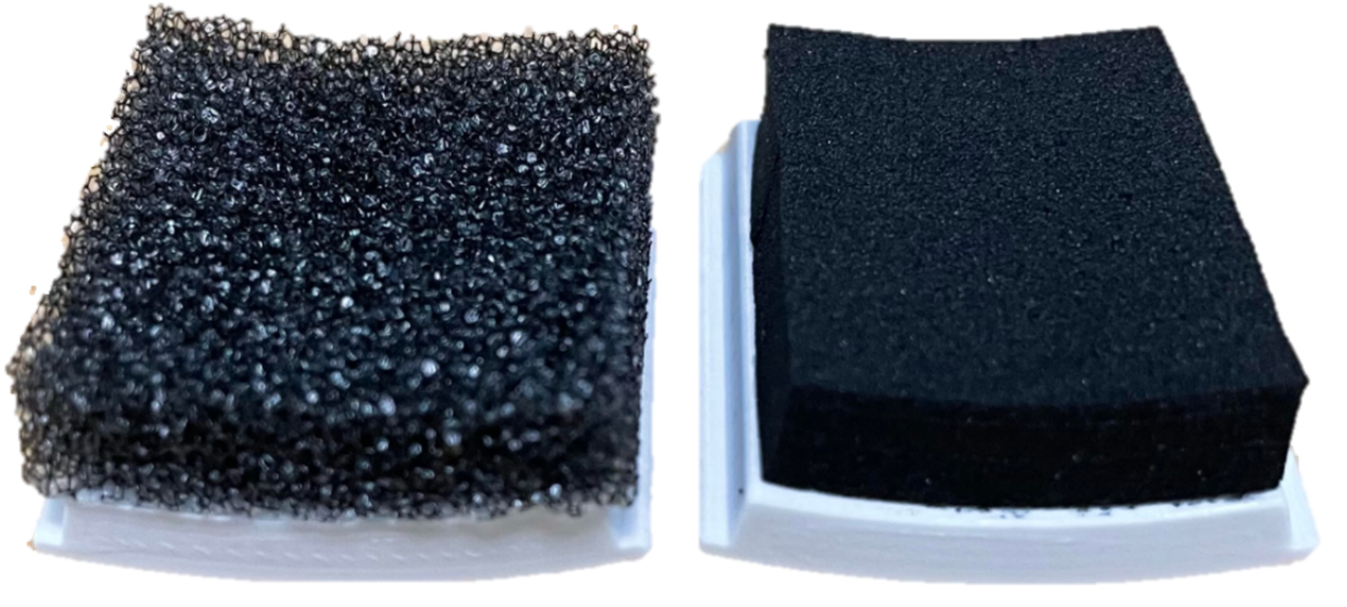
Two types of foam are compared in this paper: polyurethane or PU (left) and blended ethylene propylene diene monomer (EPDM) (right).
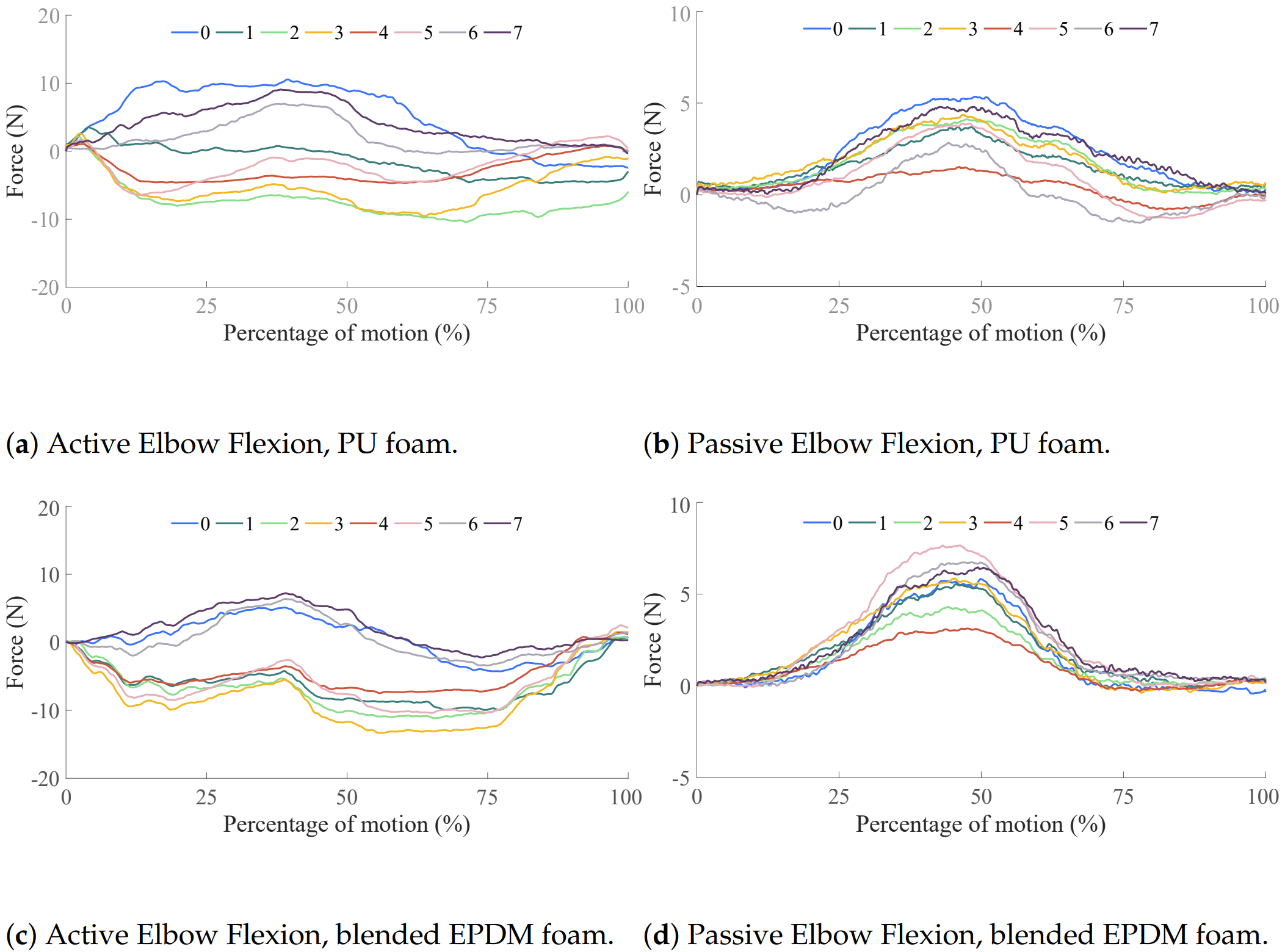
Results from the elbow flexion–extension movements performed by the subject while wearing the Harmony exoskeleton. Active movements refer to the subject performing the elbow flexion–extension while the robot follows in the gravity-compensation mode. Passive movements refer to the robot performing the movement while the subject follows passively.
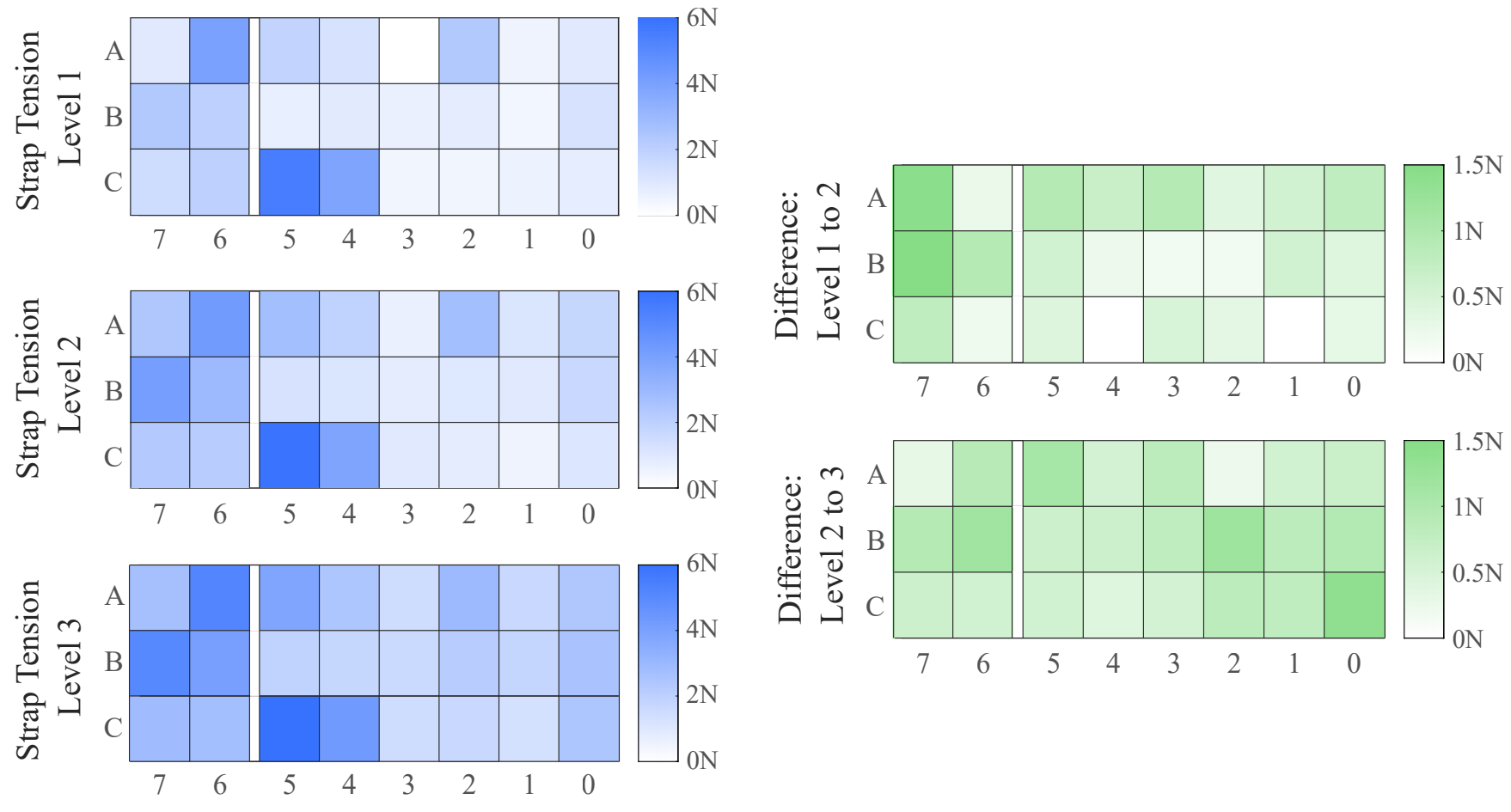
Heatmaps show distributed interface forces in Newtons across rows (vertical axis) and columns (horizontal axis). (Left) Distributed interface forces measured from FSR data at three strap tension levels where the third level is the tightest. (Right) Difference in distributed forces from the first level to the second level and from the second level to the third level.
Contributions:
Designed modular 24-channel PCB architecture with custom operational amplifier circuits for FSR signal conditioning and multiplexed data acquisition
Developed novel mechanical puck-based force transmission system ensuring reliable coupling between compliant human tissue and rigid sensor surfaces
Implemented real-time data acquisition system using National Instruments hardware with 100Hz sampling rate and distributed sensor calibration protocols
Validated sensing accuracy through controlled loading experiments, achieving force measurement precision within clinical pressure pain threshold requirements (±0.34N RMSE)
Collaborators: Keya Ghonasgi, Paria Esmatloo, Ashish D. Deshpande
Related Publications: